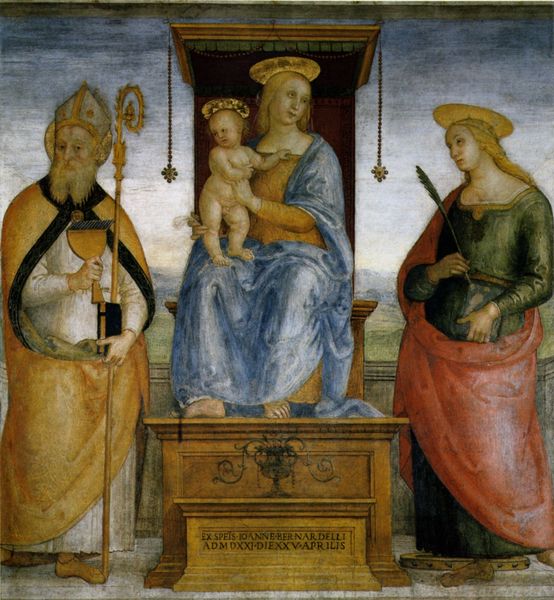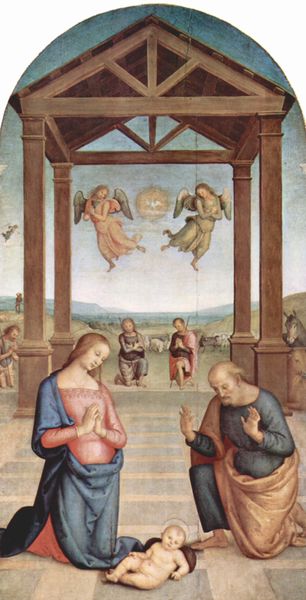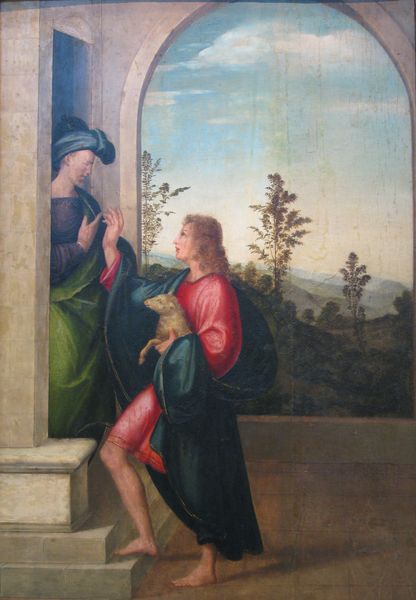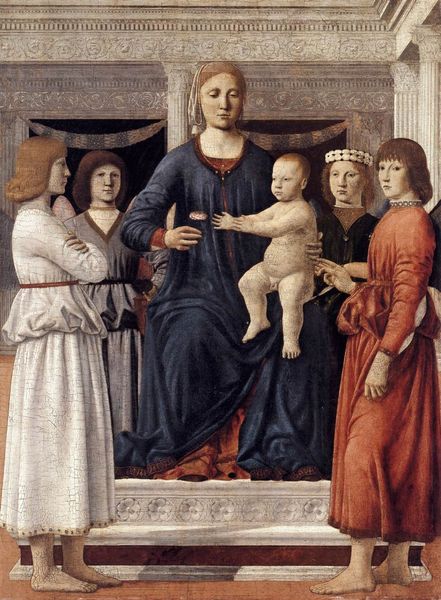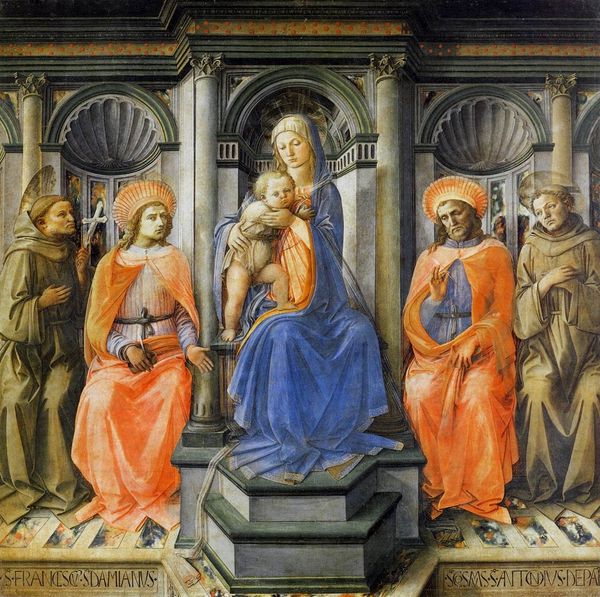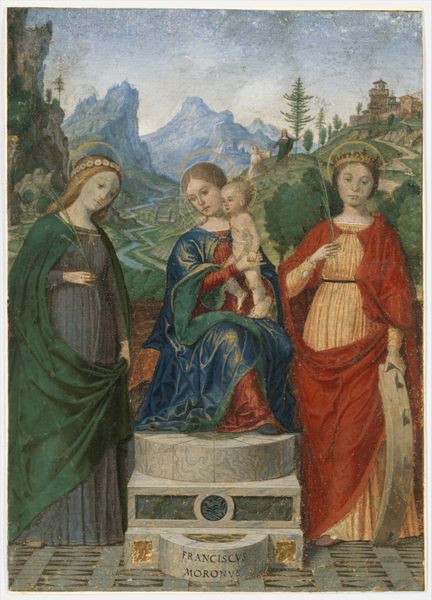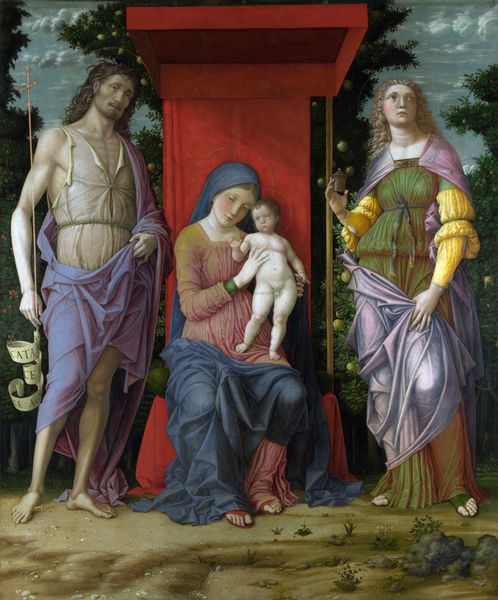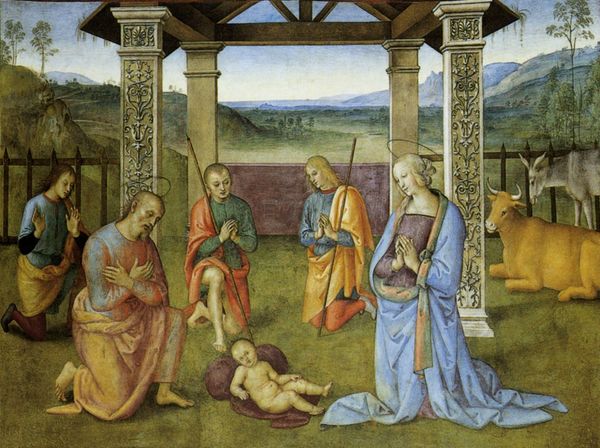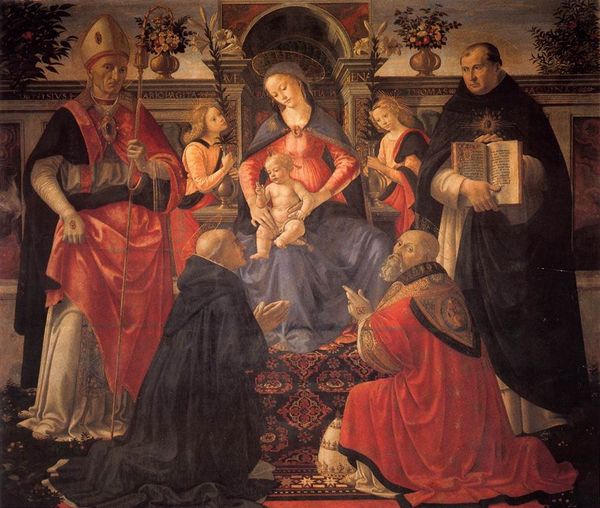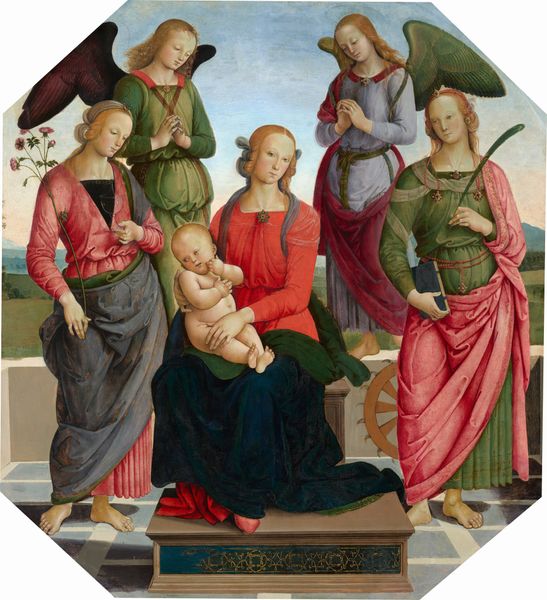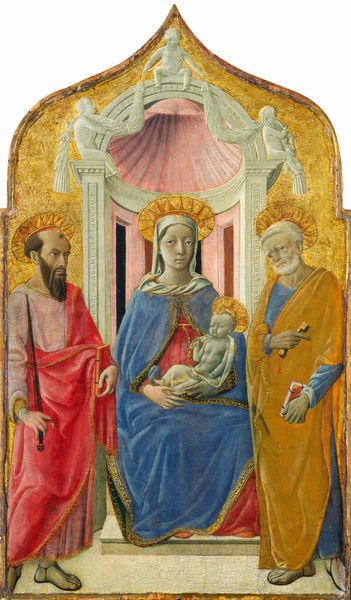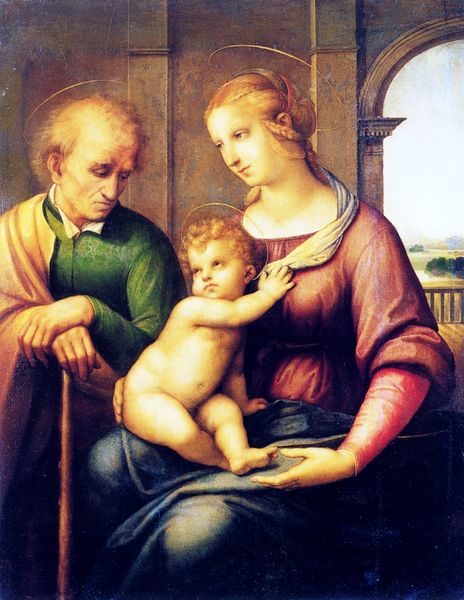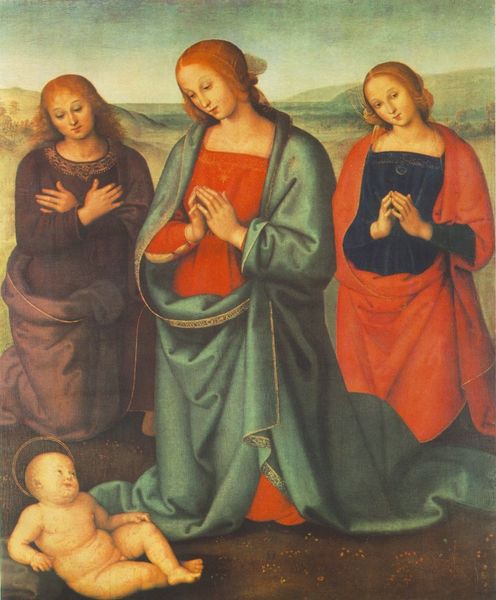
painting, oil-paint, fresco
#
portrait
#
allegory
#
painting
#
oil-paint
#
figuration
#
fresco
#
oil painting
#
christianity
#
history-painting
#
italian-renaissance
#
early-renaissance
#
portrait art
#
virgin-mary
#
christ
Copyright: Public domain
Curator: Here we have Pietro Perugino's "Pietà between St. John and Mary Magdalene," created around 1521. Perugino masterfully employed oil paint in this poignant portrayal of the Virgin Mary cradling the body of Christ, flanked by St. John and Mary Magdalene. Editor: The overwhelming feeling I get is one of serenity, strangely enough. The composition, even with the somber subject matter, feels so balanced and harmonious. The colors are muted, yet the figures possess an almost ethereal glow. Curator: Indeed. Notice the symmetrical arrangement and the architectural framework behind the figures. Perugino was a master of the High Renaissance style, focusing on clarity, balance, and idealized forms. But it’s more than just form. The oil paint allowed him to build layers of color, creating a depth of tone and a luminosity that fresco couldn't achieve. That would affect distribution and reception significantly. Editor: Precisely. Let’s look closer at Mary's face. The subtle shading around her eyes, the delicate curve of her lips. The painting doesn't just depict sorrow; it conveys a profound acceptance and a sense of grace. Her elegant clothing, those finely rendered garments of deep plum, signal a specific social status through fabric quality. How might contemporary viewers have engaged with the painting and these specific representations? Curator: That's a vital consideration. Religious works like this were commissioned, they served didactic functions for both the elite and general population of the era. Also the Madonna's garments may function on a symbolic register, acting to transform mundane, earthly objects to achieve a celestial appearance. Editor: I’m intrigued by the space itself. It’s confined yet feels open, a paradoxical tension that heightens the emotional resonance. Even the checkerboard flooring plays a part, directing the viewer's gaze toward the central figures. Curator: And the artist inscription along the painting’s lower edge indicates the specific patronage, and by extension, something about the early audience. It provides clues about its early history and ownership. Editor: Analyzing Perugino’s ‘Pieta’, one recognizes a beautiful interplay of artistic form and deeply moving emotional expression. The balance of aesthetic harmony, in relation to subject matter is rather striking. Curator: This analysis gives way to contemplating the ways in which materiality can intersect with deeply felt expressions.
Comments
No comments
Be the first to comment and join the conversation on the ultimate creative platform.
